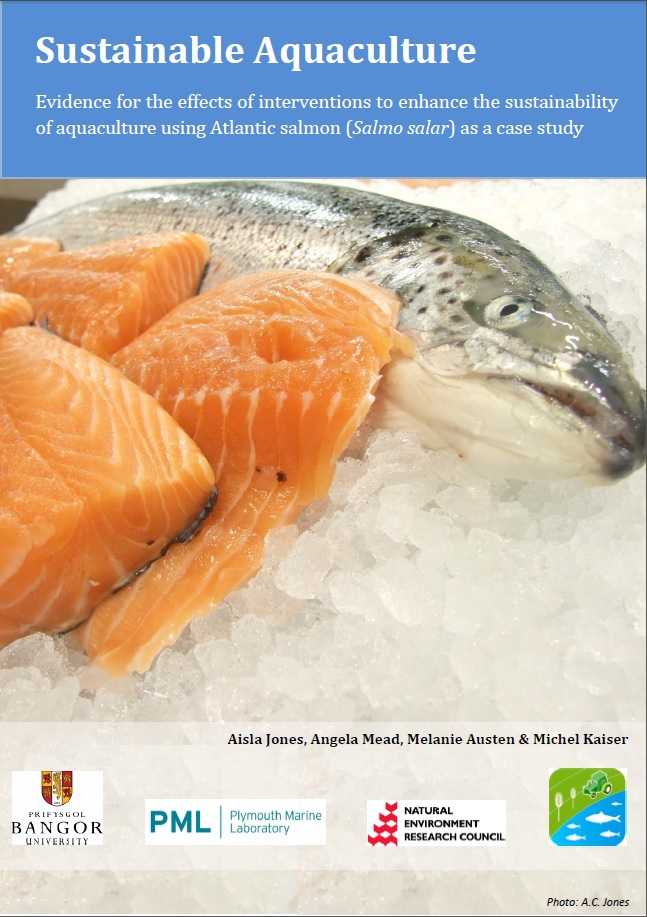Use genetically modified alternatives
-
Overall effectiveness category Awaiting assessment
-
Number of studies: 4
View assessment score
Hide assessment score
How is the evidence assessed?
-
Effectiveness
not assessed -
Certainty
not assessed -
Harms
not assessed
Study locations
Supporting evidence from individual studies
A randomised, replicated, controlled experiment in Norway (Hemre et al., 2005) found similar growth rates and final body weights in salmon, Salmo salar, fed diets containing non-genetically modified soybean, genetically modified soybean or fish meal diets. Average body weight increased from 135g to 500g over a three month period. A lower condition factor was detected in salmon fed the control fish meal diet (1.35) compared with the genetically modified soybean (1.37). Over 12 weeks, 1,200 smolt salmon were fed one of three diets for 12 weeks using automated feeders: a diet containing non-genetically modified soybean, genetically modified soybean or a standard fish meal diet. Soybean is a replacement protein for fish meal. Growth rates and weights were measured at the start of the experiment then after 6 and 12 weeks.
Study and other actions testedIn 2007, a randomised, replicated, controlled study in Norway (Bakke- McKellop et al., 2007) found similarities in survivorship, growth rates and histology between salmon, Salmar salar, fed non-genetically modified and genetically modified soybean diets to replace fish meal. Histological examination of the stomach, pyloric caeca, mid-intestine, liver, spleen, kidney, thymus, brain and muscle tissue revealed no differences that could be attributed to feed composition. For 3 months, groups of salmon were fed one of three diets containing 172g per kilogram genetically modified full-fat soybean meal, an unmodified soybean meal or a reference (control) diet with fish meal as the protein source. Fish were acclimatised for 6 weeks before being fed the experimental diets using automatic feeders. Seven fish were randomly sampled from each tank after 12 weeks for sampling. Survivorship and growth rates were measured and histology investigated.
Study and other actions testedIn 2007, a randomised, replicated, controlled study in Norway (Bakke- McKellop et al., 2008) found no effects on the histology of salmon, Salmo salar, fed diets containing genetically-modified maize and soybean as a substitute protein source for fish meal. Histological examination of the stomach, diffuse pancreatic tissue adjacent to the pyloric caeca, liver, spleen, kidney or thymus that could be attributed to feed composition. Over eight months, fingerling salmon were fed one of seven diets containing maize (two genetically-modified and two standard varieties), soybean (one genetically-modified and one standard variety) and a standard fish meal diet. Fish were removed from tanks were taken for histological screening. The Atlantic salmon used within the experiment were at the parr- smolt transformation stage.
Study and other actions testedA controlled, replicated study in Western Norway (Sissener et al., 2009) found similar overall in final weight and growth rate between Atlantic salmon that were fed diets containing genetically modified and non- genetically modified soybeans. However, one of four sampling periods found that growth rate was lower in genetically modified fed fish (0.74 compared to 0.85). Another sampling period found the genetically modified fed fish to be heavier (98.3g) compared to the salmon fed standard soybean meal (93.5g). Over seven months, salmon (average initial weight 40g) going through the parr–smolt transformation, were fed experimental diets: a non-genetically modified soybean diet (control) and two diets with genetically modified soybean meal included at a 25% and 26.2% level. Fish meal was the main source of protein in the diets. Growth rates and weights were measured. The trial began in July with four experimental sampling dates in September, December and the beginning and end of February.
Study and other actions tested
Where has this evidence come from?
List of journals searched by synopsis
All the journals searched for all synopses
This Action forms part of the Action Synopsis:
Sustainable Aquaculture
Sustainable Aquaculture - Published 2013
Atlantic salmon Aquaculture Synopsis





)_2023.JPG)














